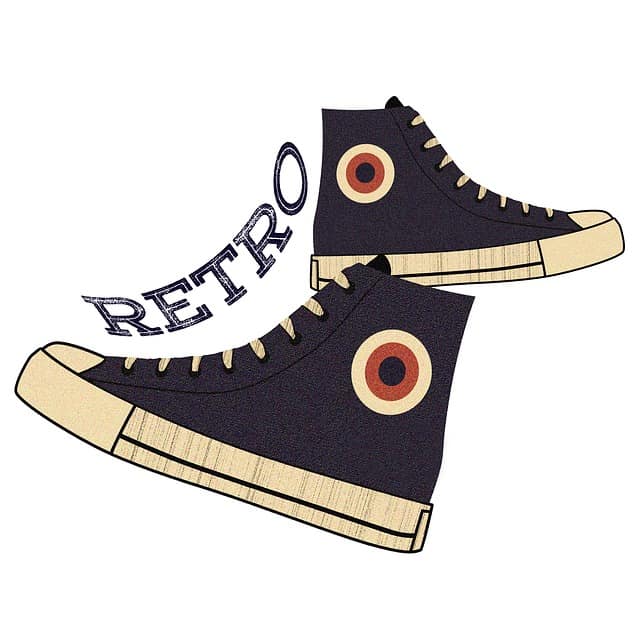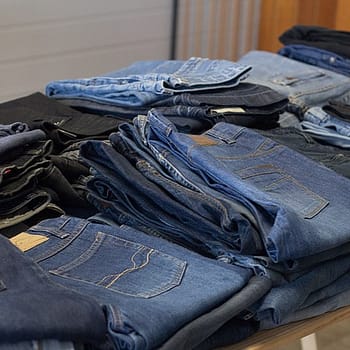A Guide to Selling Vintage Clothing Online

If you have an eye for fashion and a passion for days gone by, you’ve likely thought about turning your skills into a business. Thanks to social media and online retail platforms, selling vintage clothing online has become a huge trend, with thousands of vintage and thrift stores on Facebook, Instagram, Etsy, and Shopify across the world. In fact, the second-hand apparel market was worth around $27 billion in 2020 and is projected to reach a stunning $64 billion by 2024, with 118.8 million anticipated future sellers! If you want to join this booming industry, beat the competition, and share your love for 40s dress silhouettes, 70s colours, and 90s denim, then look at our ultimate guide on how to sell vintage clothing online.
Find your niche
Start by defining your angle so you can discover what items you will stock, who your customers are likely to be, and shape your brand. “Vintage” is a term that covers items from 20-100 years old, so you have a lot to play with! Some ideas on where to focus include:
- High-end designer vintage items and collector’s items
- Different decades
- Clothing categories like eveningwear, sports/athleisure wear, casualwear, or workwear
- Upcycled vintage items
- Menswear or womenswear
- Certified vintage
- Everyday thrift items
- Specific vintage brands
- Genres like the music industry, British vintage, USA vintage, etc.
- Fashionable vintage that changes as trends develop
When choosing your niche, think about who you want to sell to and how to play to your strengths!
Develop your brand
Your brand is what people think about when they think of your business. Work on your story, why you got into the vintage fashion scene, what your mission is, and who you want to become. You can use this to define the aesthetic of your brand as well as curating your collection.
- Research the audience you want to sell to – What are their challenges? What do they value? What is their income for fashion items? What are they up to in their lives?
- Develop your personality – What energy do you want behind your brand? Are you going to be focussed on one element of vintage fashion over the other – for example, sustainability over style, or exclusivity over slow fashion?
- Design your logo and slogan – Give your business a name and by-line that encompasses your brand’s personality and values. Think about how this name will work with social media handles and secure your presence on e-commerce platforms.
- Apply your branding – Wherever your brand is, people must be able to recognise you. This means applying your brand consistently and accurately on every platform where you have a presence.
Plan your funding
Although vintage and thrift clothing businesses have very low overheads and start-up costs, you’ll still need to organise your cash flow properly before you launch and start selling vintage clothing online.
- Cash on hand – You’ll need cash on hand to be able to buy stock quickly, as it appears. You don’t want to lose out on a fantastic bargain or item because your cash flow is too tight. Based on your research, you should know how much you need to spend for the items you want to stock but start small and always keep some cash handy for new items that pop up.
- Business space – The great thing about selling vintage clothing online is that you can do it from home! But you still need to manage your business space. You’ll need space to display clothing items (whether you are using a model, mannequin, or anything else) with an attractive backdrop, space to store clothing items, and space to pack and ship items as they are sold.
As you grow, you may need to find additional space or increase your stock, so be sure to research small business loans, crowdfunding options, and more.
Source your stock
There are several great sources of stock to investigate, including:
- Your own collection – Go through your curated wardrobe and see what you are happy to sell, as this is a great way to fund future stock purchases.
- Donations – Ask friends and family to donate unwanted clothing directly to you. You can always offer to pay for items you want to sell on, and any unwanted items can be donated to charity.
- Thrift stores – Start building strong relationships with thrift stores in your area. Not only will you likely spend hours sifting through their racks for treasures, but you can also ask them to call you in for a first view when new stock comes in.
- Auctions – Look for local auctions in your area as well as online auctions. It’s a little more challenging to evaluate the stock but the items are usually sold at very low prices.
- Estate sales – Get in touch with local estate sale management companies and agents and follow them on social media, as these can be treasure troves for vintage clothing at very good prices!
- Collectors – as you build your reputation, start chatting to private collectors and the vintage community. Often, they will want to sell items or collections and are happy for you to take on the marketing and sales process for a portion of the profits.
- Other vintage stores – Follow vintage stores and online sellers in your area, as this is a great way to spot a good bargain and sell it on for more or upcycle it into a new item.
When buying stock, be sure to do your research so that it’s easier to recognise the styles, union labels, fabrics, and zippers of classic vintage items. Carefully inspect items for stains and damage (make sure it’s damage you can repair and be up front about it with customers), and always shop with a plan!
Manage your inventory
Great storage and inventory management is key when you sell vintage clothing online, or your store will start feeling like a nightmarishly disorganised thrift store. We recommend that you:
- Have a dedicated space with designated areas for items that need to be sorted, items that are sorted, sold items, and items to be shipped.
- Ensure that the space is dry, with good ventilation, and good lighting (no sunlight as that can fade and damage clothing). Mould, moths, and damp are big issues, so make sure your environment is dust-free, clean, and moisture-free.
- Protect high value items by placing them in garment bags. Choose fabric bags not plastic ones, as plastic ones trap any moisture and can lead to mould.
- Use padded or velvet hangers, as these protect the shape of the garment, stop them from slipping off the hanger, and prevent stains and damage. Never use wire hangers.
- Use tissue covers for items with embellishments like sequins and zippers and place them so they can’t catch on other fabrics.
- Develop a sorting system in each area, dividing items by type and colour.
Don’t skimp on photography and lighting
When you’re running an online store, images are the only way your customers can interact with your products, so you want them to be as informative and as attractive as possible. In clothing photography, you want your images to be:
- High-quality – It’s important that the images are high resolution and high-quality, with good lighting. This is to ensure that people can get an accurate indication of the cut, colour, size, detail, material, and quality of the item. We recommend that you use a professional-level camera with appropriate lenses, reflectors, tripod, and lighting, as well as a computer with photo editing software and storage.
- Detailed – You want to capture the item at every angle and get a clear representation of important details like lace, labels, buttons, zips, and even any damage. Aim to have full photographs of the item from the front, back, and sides as well as close-ups.
- Backdrop and setting – Create a consistent way to present your items, using a plain or lightly detailed background with no clutter or distraction. We recommend a set that is easy to set up and tear down, that doesn’t take up too much space. Some online vintage stores like to use a model, which has the advantage of being able to show the item as it sits and moves on a live person (many also use video for this reason). A great-quality mannequin that suits your brand is also a good way to go.
- Props and outfits – Vintage clothing looks best when it’s given some context, so bring your items to life by making them part of attractive outfits, pairing them with accessories, and placing a prop or two in the photo shoot.
Camera equipment is one of the biggest expenses for online vintage stores, but the reality is that these images are the only way to sell your product for the best price. It’s worth looking at outsourcing your photo shoots to a professional fashion photographer if you don’t have the equipment or the expertise. These photographers can offer you an affordable deal for a few hours of shoots per week or month, expertly capturing your items, editing them for their most attractive look, and supplying you with world-class marketing and sales material for your online catalogue.
Additional tips to make your vintage clothing store a success
We’ve covered all the basics, but here are a few more tips to make you stand out from the competition!
- Have a sizing system – Be consistent and as accurate as you can about sizing your clothing rather than relying on labels. The last thing you want is online shoppers to move to the competition because they can’t tell if your items will fit them, and photographs aren’t a reliable way of telling the size of a top or purse. Take measurements yourself and include the measurements for hip, waste, and chest, as well as sleeve length and neck opening on every item’s description.
- Have a clear delivery and shipping system – Research affordable and reliable shipping partners and be open about who you ship with, shipping times, and who is liable for shipping costs. Think about offering pick-up options for local buyers, build-a-bag options for buyers who want to minimise shipping costs and buy multiple items, and reduced shipping for large or expensive orders.
- Brush up on social media marketing skills – Social media marketing is invaluable for small ecommerce businesses, so it’s worth getting trained up on the latest social selling techniques or hiring someone to handle your social media on your behalf. It’s the most effective way to engage with your buyers, present new items, sell directly to buyers, and advertise to the widest possible audience.
Treat your business to affordable, professional e-commerce clothing photography
Marca is a fashion photography studio helping to build powerful online vintage clothing brands. We understand what it takes to make vintage products shine online, how to work with social and e-commerce platforms, and we work to keep photographic products affordable and accessible for small and medium-sized retailers. Our team of experienced photographers has worked with some of the biggest fashion houses in the UK and the world, including Chanel, Puma, Lacoste, Ben Sherman, Oliver Brown, and Calvin Klein, as well as vintage clothing stores.
Chat to our product fashion photographers today and we’ll use our expertise from working with the biggest fashion houses to take your brand to the top and become a name in the online vintage clothing space!




